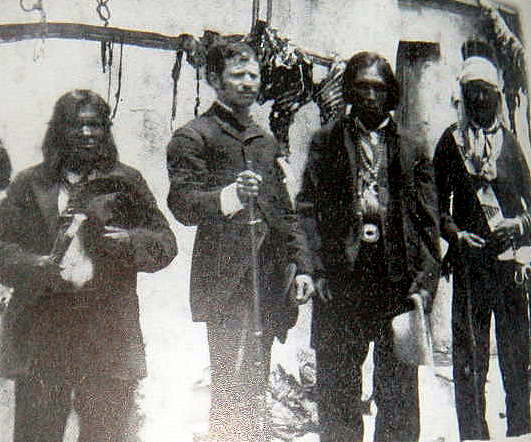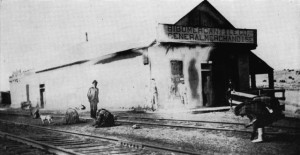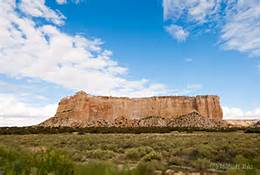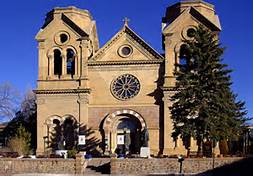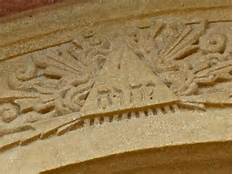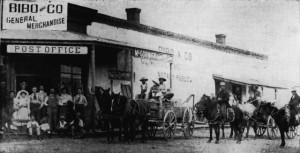Solomon Bibo
Values Codes I – E – L – P
Solomon Bibo was born in 1853 in Brakel, Westphalia, Prussia.
His parents were Blumchen and Isak Bibo, a cantor and teacher.
He was the sixth of eleven children.
Along the way . . .
In 1869, Solomon Bibo came to the United States, giving up his Prussian citizenship.
In 1875, he was naturalized as a United States citizen.
Bibo’s elder brothers, Nathan Bibo and Simon Bibo, had arrived in 1866.
They settled in Santa Fe, opening a series of dry goods stores in the surrounding area.
By 1869-1870, Nathan and Simon Bibo owned a trading post in Cebolleta, New Mexico, where they worked with the Navajos.
Solomon Bibo arrived in New York and, traveling westward, joined his brothers as a partner in their trading posts in New Mexico.
The brothers quickly loaded up a wagon with merchandise and sent Solomon out on his first “sales trip.”
Solomon Bibo arrived at a settlement of the Acoma Indians, where they were dry farming corn.
With Solomon Bibo speaking Yiddish, and the Indians speaking Keres, the Acoma language, they somehow came to understand each other.
And, in over a week’s time, Solomon sold all his wares and loaded up his wagon with corn and beautiful Acoma pottery for the return home.
His brothers, proud of his accomplishment, immediately loaded up another wagon and sent him back.
When he arrived, the Acomas greeted him warmly and took him south to their main encampment on top of a 300-foot high mesa!
The Acomas pushed and pulled Solomon Bibo’s wagon up the winding trail to the top.
There, Chief Martin Valle greeted him warmly and gave him a small “trading post” next to the Catholic church. The resident priest was not pleased.
Through trade negotiations, Solomon rapidly grew friendly with the Acoma Pueblo and Chief Martin Valle.
He learned some English, more Spanish, and became fluent in Keres, the language of Acoma, which was used for trade transactions. (He also learned Navajo, Laguna, and Zuni.)
In 1884, Solomon Bibo helped the Acomas to settle their governmental land grant issues.
Some local ranchers challenged his handling of the affairs, but Solomon was legally cleared of the accusations and, to pacify the situation, was appointed as the new Governor/Chief of the Acoma Pueblo by W. C. Williams, the Indian agent for the Pueblo, after the death of Chief Martin Valle.
All the male members of the tribe had signed a petition asking for Solomon Bibo to represent them.
Solomon Bibo was continually elected Governor/Chief of the Acoma Indians for the next 13 years.
Solomon was the first chief of the Acomas to insist and enforce compulsory education for the Acoma children.
They went to school in Sante Fe and Albuquerque.
San Francisco
From 1898-1906, Solomon Bibo was a partner in a quality grocery store called Bibo, Newman & Eichenberg. He traveled between New Mexico and California for business until 1904.
His wife, Juana (Valle) Bibo adapted rapidly to the world outside of the Acoma Mesa, learning English and assisting Solomon in his businesses as well as having a candy store in San Francisco.
The Bibos also had investments in San Francisco lots and homes.
Their store and most properties were lost in the 1906 Earthquake-Fire, and their insurance company failed, so they received no payments.
The Depression ruined Solomon Bibo’s investments in New Mexico. His stores failed and an extremely heavy and early snowfall in the mountains cost the lives of his 20,000 sheep, which he had leased out for shearing.
Family
Solomon Bibo’s brothers were: Sam, Joe, Emil, Nathan, Simon, and Ben.
His sisters were: Clara, Rika, and Lena.
Solomon was the last to arrive in America, where he joined his brothers in New Mexico.
When Solomon Bibo first came to the top of the Acoma mesa, he met Chief Martin Valle’s grand-daughter, Juana.
Not long afterwards, Solomon Bibo asked Chief Valle’s permission to court and marry Juana.
The Chief and Juana happily agreed, but Solomon insisted that Juana be sent East to be “educated.”
Upon her return, in 1885, Solomon Bibo married Juana Valle. They were married twice: first in an Indian ceremony and later in a civil ceremony by Justice of the Peace, Juan F. Montana.
Solomon and Juana Bibo eventually had seven children.
The Bibos raised their children in the Jewish religion; LeRoy celebrated his bar mitzvah at Ohabei Shalom of San Francisco in 1912.
In 1969, when extensive research was conducted on the Bibo family . . . .
- Rose Bibo (Mrs. Max Weiss), born 1887 at Cubero, was living in Othello, Washington.
- Irma Bibo (Mrs. Harry Henderson), born at Cubero, was living in San Meteo, California.
- Clara Bibo (Mrs. Walter Reigger), born at Cubero, was deceased. Had been living in Burlingame, California.
- Celia Bibo, born at Cubero, never married, had lived in San Francisco and was deceased.
- Leroy Bibo, born in San Francisco in 1899, married a resident of Charter Oak, and was retired.
- Carl Bibo, born in San Francisco in 1909, married and was a resident of Santa Fe, New Mexico.
- Edwin Bibo died in infancy and is buried on the reservation at Acomita.
Solomon Bibo died in 1934, in San Francisco, California.
Juana Bibo died in 1941.
Both were cremated and interred in the Home of Peace Mausoleum of Temple Emanu-El in Colma, California.
More . . .
Much more has been learned about Solomon Bibo since this early 1969 article in Western States Jewish History, from which this exhibit was created.
The Angry Priest
The priest of the church in top of the Acoma Mesa was so upset with the elevation of Solomon Bibo’s reputation, as well as his courtship to Juana, that he got on his mule and traveled down the mesa, sixty miles to his Bishop in Santa Fe.
After pleading his case, the Bishop put his arm around the priest and guided him to the great doors of the Cathedral.
The Bishop then pointed to the top of the stone sill above the doors where there were four Hebrew letters indicating the silent Hebrew name for God. (Look for these when you visit Santa Fe.)
A major part of the money to build this cathedral was donated by the Speigleberg family of Sante Fe. They are relatives of the Bibos.
Sources
- Norton B. Stern, “Leroy and Mrs. Max Bibo, Pioneer Jews of San Francisco, Part One, A-L,” Western States Jewish History 41/1.
- Norton B. Stern, “Solomon Bibo, Pioneer Jews of San Francisco, Part One, A-L,” Western States Jewish History 41/1.
- Sandra Lea, “Solomon Bibo: Jewish Indian Chief,” Western States Jewish Historical Quarterly 1/4.
Samantha Silver is the curator for this Solomon Bibo exhibit.
